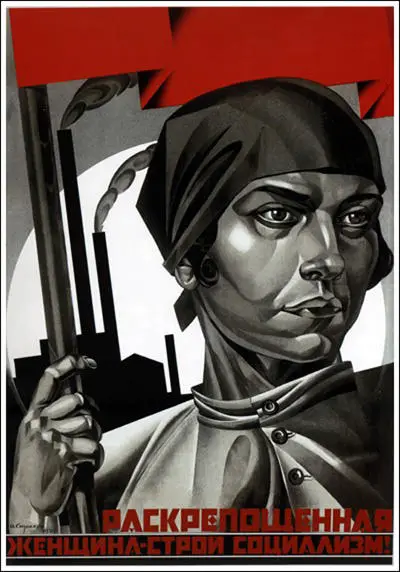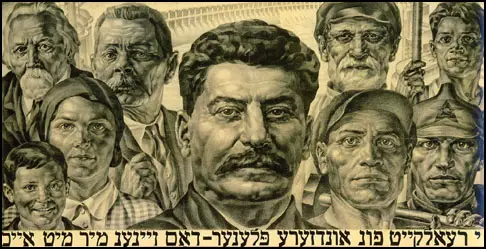Adolf Strakhov
Adolf Strakhov (Braslavsky) was born in the town of Dnipropetrovsk, on 18th October,1896. He graduated from Odessa Art School in 1915.
One of the founders of the Socialist Realist art movement he produced several paintings and posters dedicated to the events of the Russian Revolution and the Russian Civil War.
Strakhov's most famous work was "The Emancipated Woman is Building Socialism" (1926). However, as David King, the author of Red Star over Russia (2010) has pointed out: "Strakhov portrays the politicised woman factory worker as an integral part of the class struggle. Soviet communist policy, overwhelmingly decided by men, opposed the idea of an independent women's liberation movement."
Adolf Strakhov died in Kharkiv on 3rd January,1979.


Primary Sources
(1) Victoria Bonnell, Iconography of Power: Soviet Political Posters under Lenin and Stalin (1999)
It took the revolution of 1905 to unleash the tremendous satirical potential in Russian political art. During the brief interlude between 1905 and 1907, when a relatively free press emerged for the first time in Russia, 249 new satirical journals were published, containing about 3,000 satirical cartoons. What made these satirical publications so distinctive was their critical stance towards the tsarist government. Trenchant caricatures appeared in the pages of these journals, some of them by major contemporary artists or younger men, such as Moor, who would soon become prominent Soviet poster artists.
(2) David King, Red Star over Russia (2010)
The Bolsheviks equipped and mobilized agitational propaganda trains during the Civil War, sending them to all parts of Russia to inform the population about the ongoing struggles in defence of the revolution and to help organise lectures, meetings and discussions on the meaning of the new workers' state.
The first train named after Lenin, went into service on August 13, 1918. Others soon followed, bearing titles such as "October Revolution", "Red East", "Soviet Caucasus" and "Red Cossack". The carriages were famously decorated with paintings, graphic or satirical, on subjects that reflected the names of the trains and the places where they were headed.
(3) Anthony Rhodes, Propaganda: The Art of Persuasion (1987)
For the masses, propaganda had to be simple, categoric, direct. Within a short time all forms of printing - books, newspapers, pamphlets, and posters - were in the hands of the State Publicity Corporation, which controlled not only the publishing operations but the printing machinery and paper supply. It was endowed with a censorship department which examined all book manuscripts, film scripts, drawings, music, and even maps. On November 12, 1920, the Main Political Education Committee of the Republic was set up, branches of which were attached to the political division of every region, district, town and village.
Student Activities
Russian Revolution Simmulation
Bloody Sunday (Answer Commentary)
1905 Russian Revolution (Answer Commentary)
Russia and the First World War (Answer Commentary)
The Life and Death of Rasputin (Answer Commentary)
The Abdication of Tsar Nicholas II (Answer Commentary)
The Provisional Government (Answer Commentary)
The Kornilov Revolt (Answer Commentary)
The Bolsheviks (Answer Commentary)
The Bolshevik Revolution (Answer Commentary)
Classroom Activities by Subject
